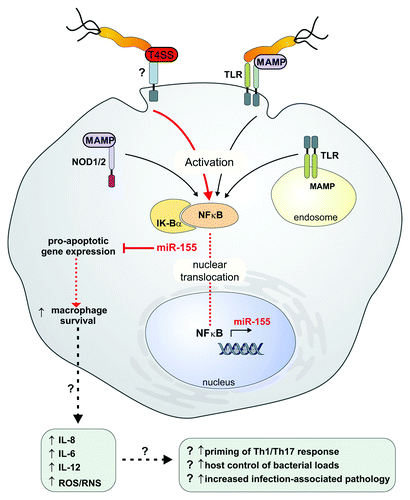Figures & data
Figure 1. The proposed T4SS-dependent activation of miR-155 expression in macrophages during H. pylori infection. The T4SS, specific to virulent H. pylori strains, induced NFκB dependent miR-155 expression, in addition to the known activation by H. pylori MAMPs via TLR and NOD1/-2 pattern recognition receptor signaling. T4SS-dependent miR-155 expression, represented by (?), may be directly dependent on an unidentified cellular receptor, or on an indirect activation pathway. miR-155 was found to target a number of pro-apoptotic genes in macrophages, and conferred an anti-apoptotic effect upon infection in the presence of a DNA damage inducing reagent. It is speculated that miR-155 expression could prolong macrophage survival in the inflammatory microenvironment, which could contribute ultimately to the deregulation of pro-inflammatory responses, increased expression of proinflammatory mediators e.g., IL-8 and IL-6 and pathology progression observed during H. pylori infection. MAMP, microbe-associated molecular pattern; NOD, nucleotide oligomerization domain; ROS, reactive oxygen species; RNS, reactive nitrogen species; T4SS, type IV secretion system; TLR, Toll-like receptor.
